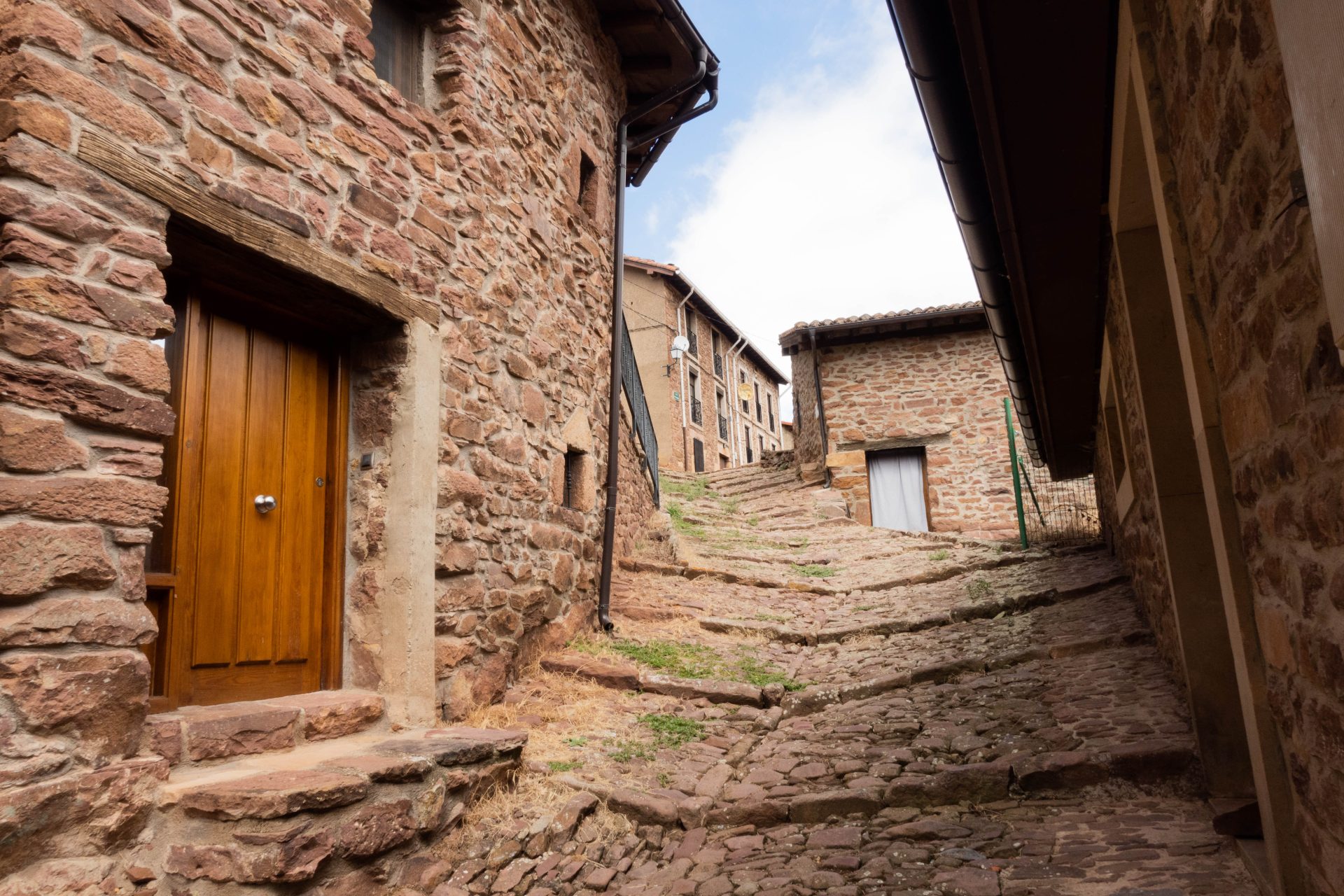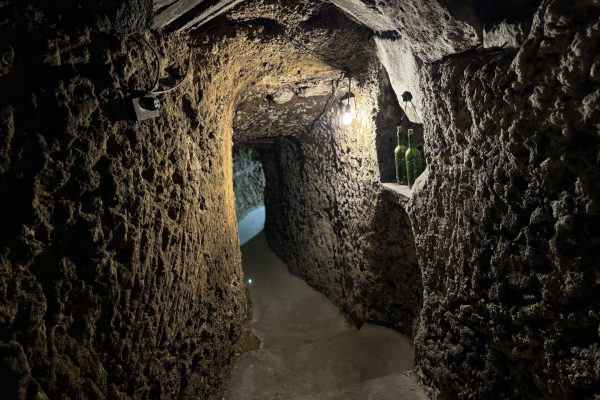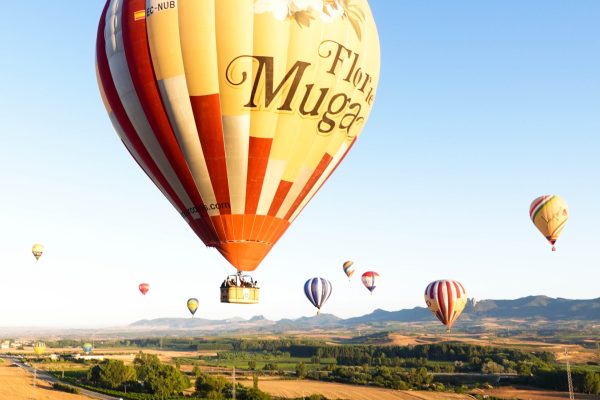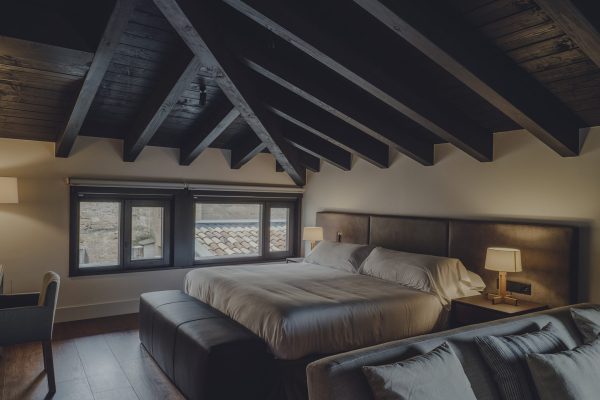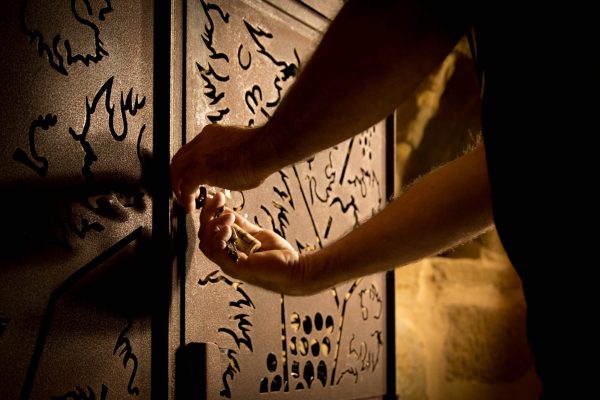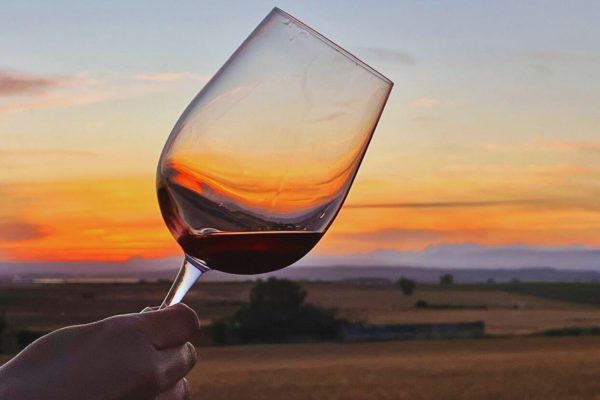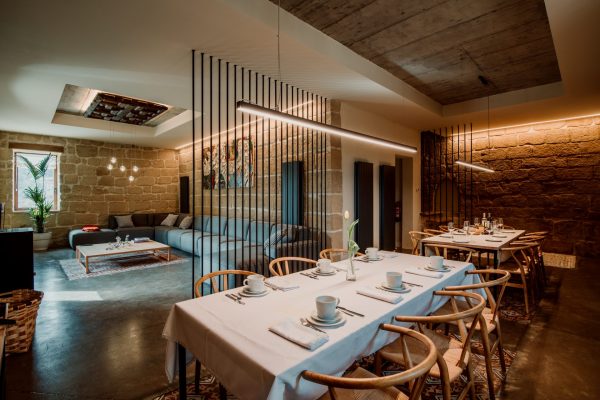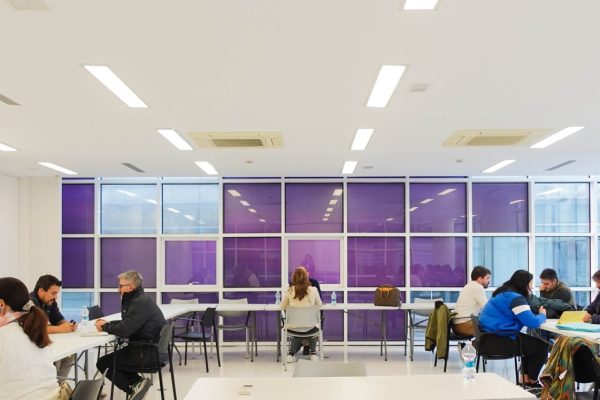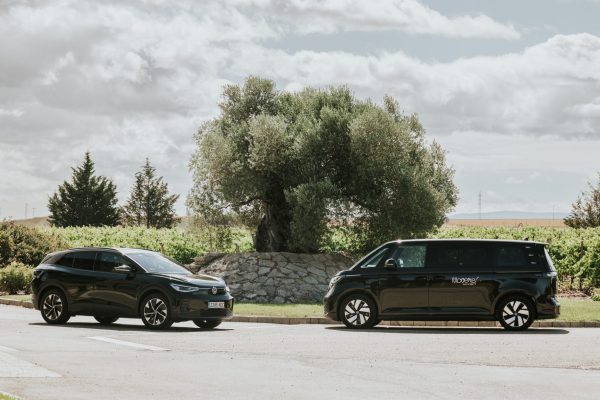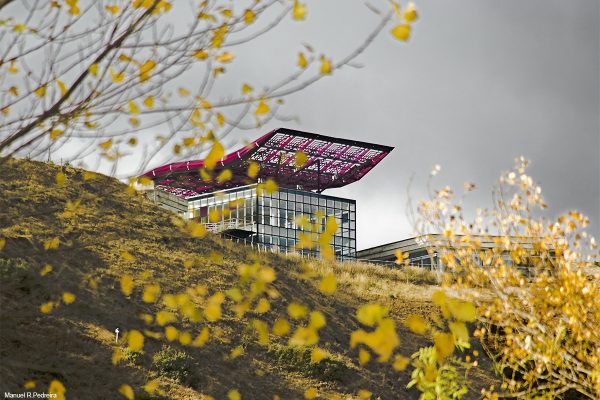The people of Anguiano es, without belonging to the 7 villages, the door to them. Located in the riojan mountains among mountains, streams, marshes and hermitages are to be found the 7 villas. Each one with its own personality, with its own history, but all 7 with a rural character that has survived to the present day.
While it is true that the rural exodus and new ways of life population and activity have declined, the tourism which reaches almost every corner of La Rioja, offers a wide range of new opportunity to such picturesque places as the 7 villas.
History of the 7 Villas in La Rioja
The origin of the 7 Villas as a regional organisation dates back to 1584when it was signed in the Ermita de Santiago, in Viniegra de Abajo, the act of foundation of the Confederation of the Cinco Villas and Valle de Canales.Brieva de Cameros, Viniegra de Arriba, Viniegra de Abajo, Ventrosa and Mansilla de la Sierra, and Canales de la Sierra, with the villages of Villavelayo, Monterrubio de la Demanda and Huerta de Arriba under its jurisdiction.
The meetings of the 7 Villas took place in the Island House.in Mansilla de la Sierra. The location was decided, as it was the centre with respect to the villas, and through its pass, in the direction of Puente Suso, where transhumance was carried out.
Also known as La Casa de Media Legua was the place where the mayors' meetings of the 7 Villas, presided over by the senior parish priest and where anyone could watch the debates.
Today, the comarca has lost its administrative and jurisdictional character, but it still maintains a historical, cultural and geographical character common. The original Casa de Islas was destroyed with the construction of the Mansilla reservoir, now resting under its waters.
Brieva de Cameros
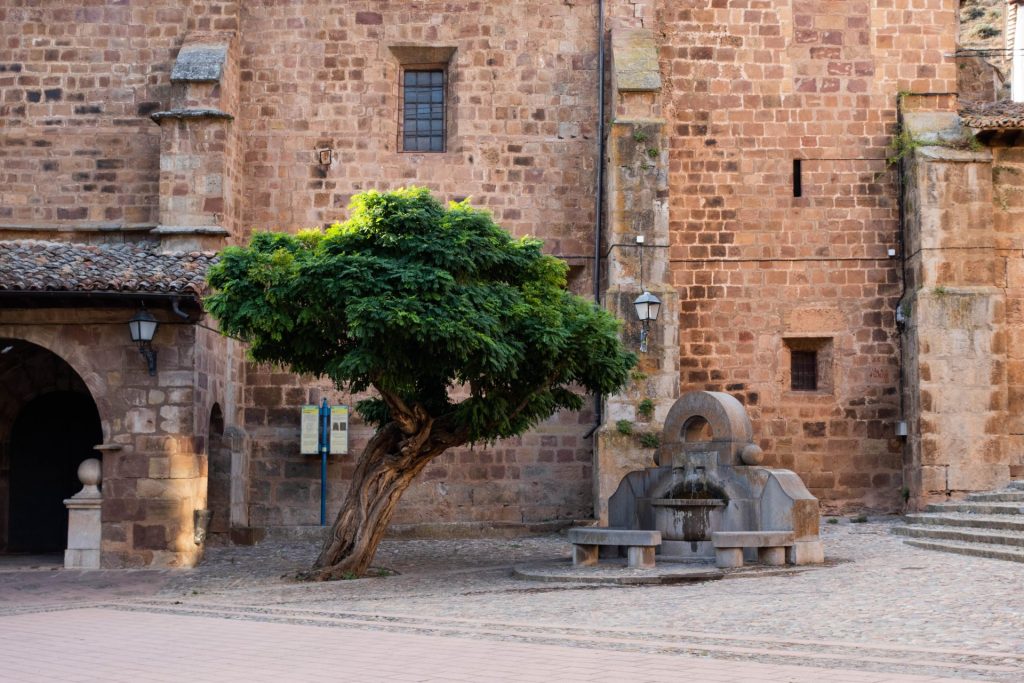
At an altitude of 964 metres, Brieva is a historic village which preserves the essence of the typical mountain villagewhere stone, water and orchards indicate the way of life of the people who live there.
The transhumance has been carried out until a few years ago in Brieva because of its valuable mountain pastures.
Highlights of the village include the church of San Miguel, the Barruso neighbourhood with the church of Santa Maria, the mansion and gardens of the Felguera familyThe Town Hall, the work of Agapito del Valle, the old forge, the washing place, the shearing hut, the shepherd's hut, the cross with the roll and the hermitage of La Soledad.
Its jurisdiction is populated by oak groves, holm oaks, pastures and scrubland. With a large abundance of water in the form of rivers, springs and streams.
The locality forms part of the route of the Cañada Real de las 7 Villas and the Cañada Real Galiana and is crossed by the GR-93 (Sierras de La Rioja) in its high mountain variant and links up with the GR-86 (Sendero Ibérico Soriano). The gorge of "La Escalera" stands out, with the bridle path that connects the Najerilla valley with the Iregua valley.
In the Brieva river is the only fish farm dedicated to the breeding of native trout fry. for the repopulation of the rivers of La Rioja.
In addition, from 2023 Brieva will be home to the headquarters of the School of Shepherds of La Rioja.
2. Canales de la Sierra
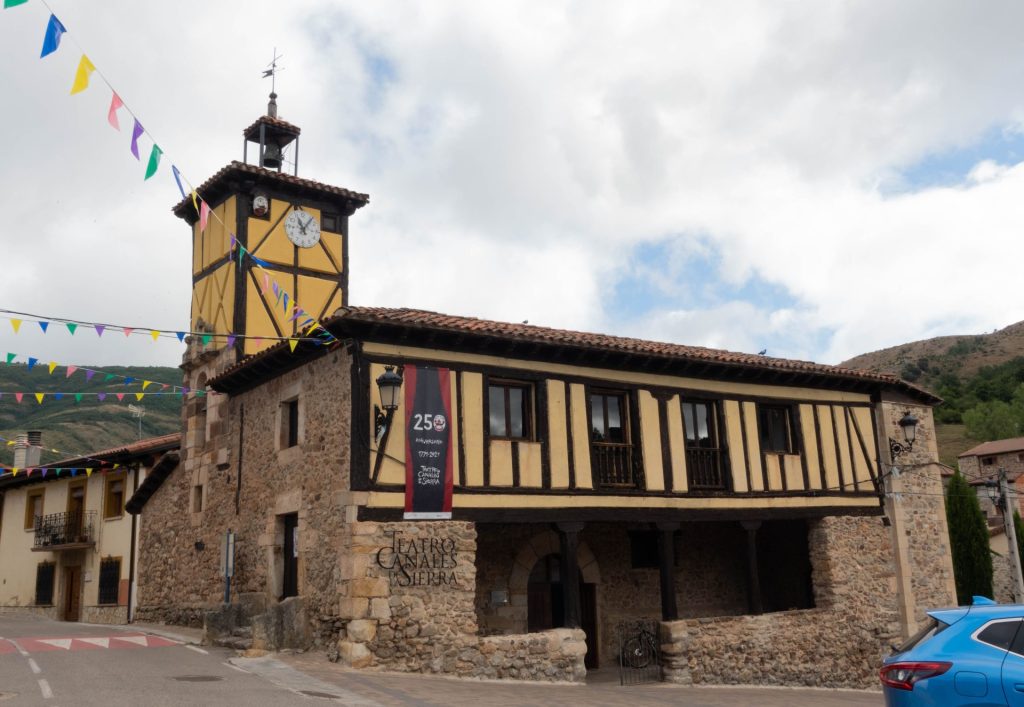
At the foot of the Sierra de la Demanda mountain range is located Canales de la Sierra, a town of emblazoned houses and monuments in ashlars that give evidence of a past greatness. It has several bridges connecting its two neighbourhoods crossing the waters of the river Najerilla.
In Canales, the vestiges of a Roman settlement, the city of Segeda.
The Palacio Condestable, the typical balconies of the period and its formidable coats of arms stand out. that adorn its buildings and that point to the presence of several monastic orders. In Canales we can find one of the few Romanesque corner balconies that exist in Spain.
If there is one thing that stands out in Canales is the Theatre buildinga wooden corral in the tower of which, next to the clock, the figure of the "flycatcher". Starting in 2019, the theatre festival "Canales Demanda Teatro".
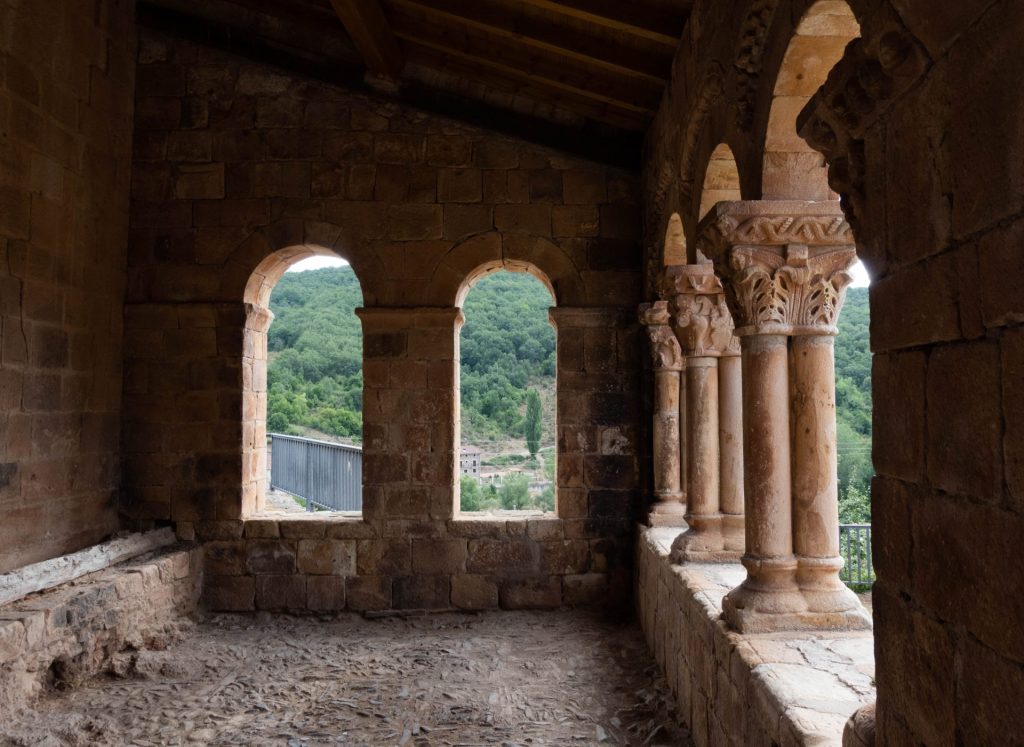
Other highlights include, the church of San Cristobal with 12th century Romanesque elements and a porticoed gallery with richly decorated capitals, in the Castilian style, unique in La Rioja. Also the parish churchdedicated to Saint Mary, (XVI-XVII c.) and the hermitage of La Soledad8 km from the municipality in a beautiful spot.
The livestock is the main source of income in Canales, complementing the exploitation of the forest and hunting.
Mansilla de la Sierra
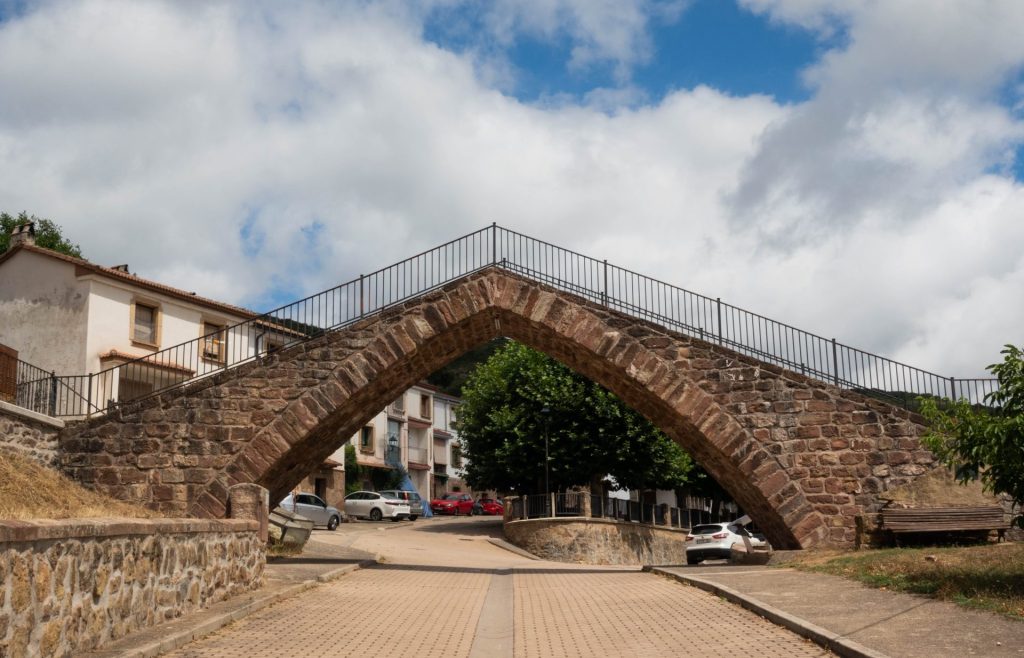
"On Palm Sunday 1960, with water up to their ankles, with the Guardia Civil, musket in hand, the inhabitants of Old Mansilla left their houses in a hurry to go to a new village, where there was still no electricity, the streets were not yet asphalted, and there was not even a single haystack to shelter the livestock".
Such was the end of a people who hours later it was flooded under water of the new swamp to the helpless gaze of those who had been born there, grown up there and made their home there.
The village of Mansilla, beautiful, built entirely in stone, remained submerged. Those who considered it appropriate stayed in the new Mansilla, a village built from scratch and which, with effort and sacrifice, those who decided to inhabit it managed to move forward.

Over the decades, some remains of the old village have been rescued, such as the Suso Bridge which is located at the entrance to it and which has been rescued stone by stone from the swamp in order to rebuild it again.
This fact together with the transhumant livestock crisis caused a mass exodus of people. As of today, the scarce 20 inhabitants of Mansilla are opposed to the declaration of the area as a Alto Najerilla Natural ParkThe area's main economic activity, livestock farming, is the main economic activity in the area, making it impossible to reconcile this with its extinction.
From the old town of Mansilla only the hermitage of Santa Catalina remains standing. which, because of its altitude, has not remained covered by the waters of the marsh.
Throughout the year in the house of the 7 Villas you can visit the exhibition "Mansilla the submerged memory".. 3D photographic collection that compares the past of Mansilla with its current state.
The reservoir that made the old village disappear under its waters gives Mansilla nowadays possibilities for the future, being a suitable place to live. for the practice of sports related to rowing, swimming, fishing, fishing, etc.…
In addition, Mansilla is located between the peaks of San Lorenzo and Urbión. which are the highest altitudes in La Rioja, which gives us an idea of the options it offers for the mountain sports.
4. Ventrosa de la Sierra
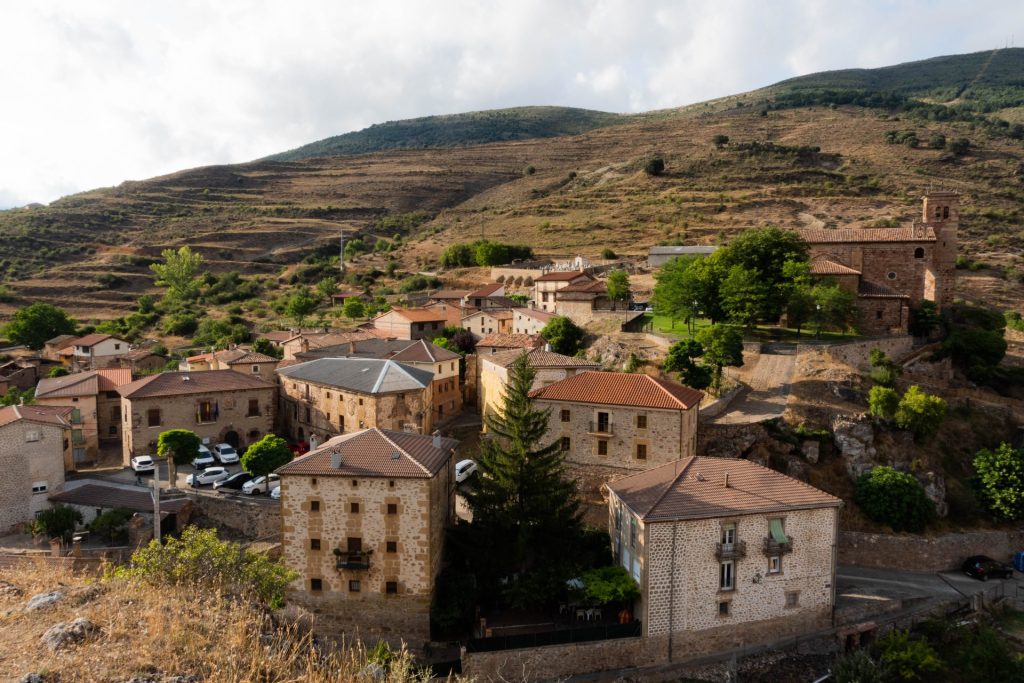
The municipality of Ventrosa de la Sierra is located at the south-eastern end of the Sierra de la Demanda and is organised in the following way around the upper course of the river Najerilla, The valley is a narrow valley that rises in altitude.
From the 1960s onwards, the village has undergone a very hard emigrationThe weak economic structure of the municipality, which is based on the sheep farming. This was a generalised tendency in the mountain municipalities that were negatively affected by the disappearance of the Mesta and its cattle-raising privileges.
Economically its main activity is livestock farmingThere are herds of sheep, three hundred cows and a hundred mares, which make use of the pastures and the forest. Forestry exploitation is centred on a third of the area of the municipality. It is worth mentioning that in recent years there has been a large increase in the number of rural tourism.
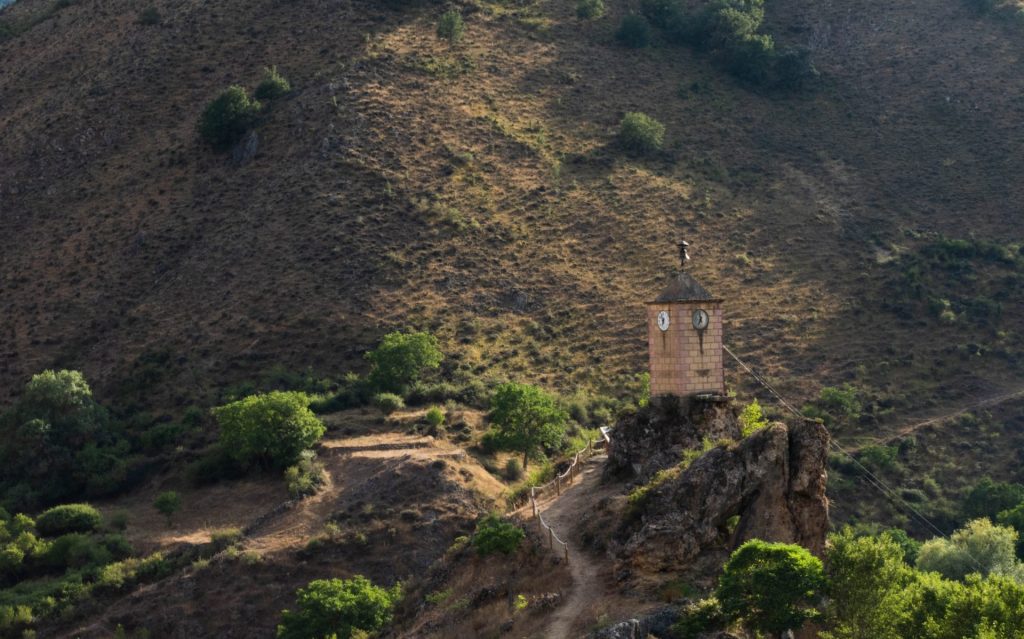
Temperature, cold in winter, warm and pleasant in spring and autumn as the area is surrounded by a mountain barrier.
In Ventrosa de la Sierra we can visit the church of St. Peter and St. PaulThe main altarpiece stands out in this 18th century church. The hermitage of the ChristIt is a simple and rustic construction, close to the town centre. The hermitage of Villa Ricaon the left bank of the river Najerilla. The little clock tower and the Ivy Bridgelocated near the hermitage of Villa Rica, on the river Najerilla.
From its civil architecture, Some buildings from the 17th and 18th centuries stand out, with heraldic coats of arms on the façades. In 1971, the well-kept complex was awarded the First National Prize for the Beautification of Villages.
Its surroundings are of great beauty. The visitor, after following the narrow, winding route that starts on the Viniegras road, you will enjoy beautiful scenery with alternating rocky areas, forests and high meadows.. The Ventrosa river, surrounded by poplar groves, flows with crystal-clear waters.
5. Villavelayo
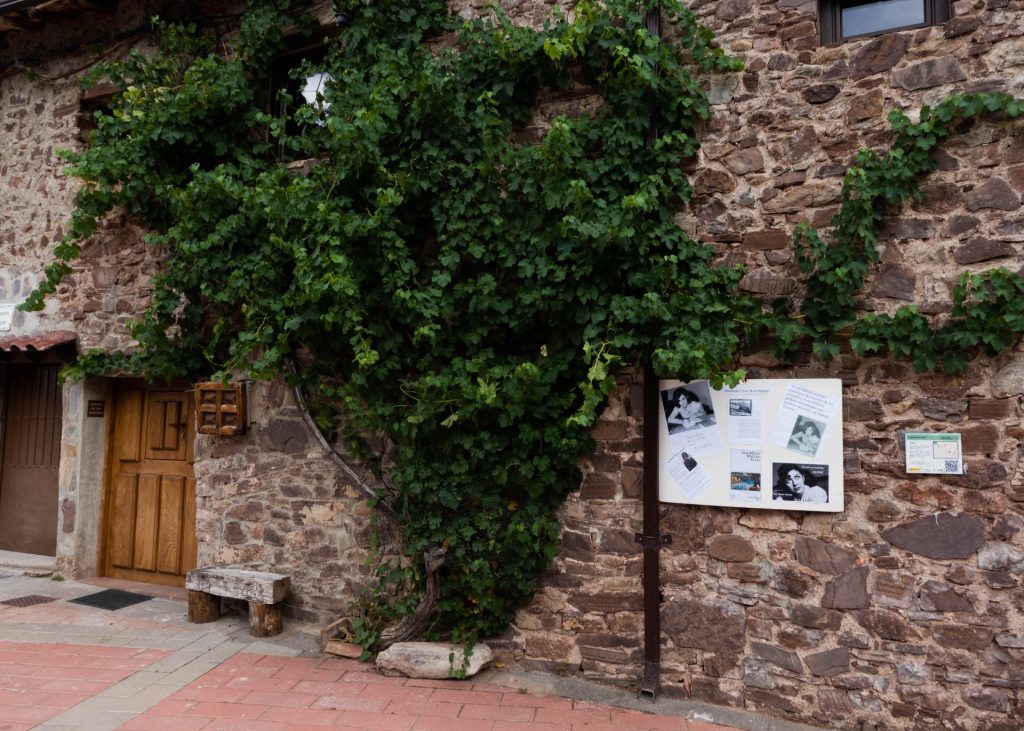
In the heart of Villavelayo, the rivers Canales and Neila merge. creating a division of the urban area in two neighbourhoods, whose streets converge in the Plaza Mayor, a point of reference for the visitor.
Located in a spectacular location between the San Lorenzo and Urbión peaksVillavelayo has spectacular beech forests to get lost in; natural pools to cool off in summer; mycological, trout and hunting resources; hiking routes such as the ascent to Pico Manzanar.
Its assets include highlighting the parish church of Santa María de la AsunciónThe church is Romanesque in style, but with earlier Mozarabic remains. It is an essential piece for capturing and understanding the spread of ancient Christianity throughout La Rioja. From its location you can enjoy a beautiful panoramic view of the whole village.
In this village was born and grew in the mid-11th century Saint AureaThe only saint born in La Rioja. She died walled up in the monastery of San Millán de Suso. We know her biography thanks to a poem by Gonzalo de Berceo.
Her wayside shrinefrom the 17th century, welcomes the feast of its patron saint on 11 March and, in summer, the second weekend in August. It is then, when the cachibirrio and the group of dancers take to the streets reviving the folklore of Vilanova.
6. Viniegra de Abajo
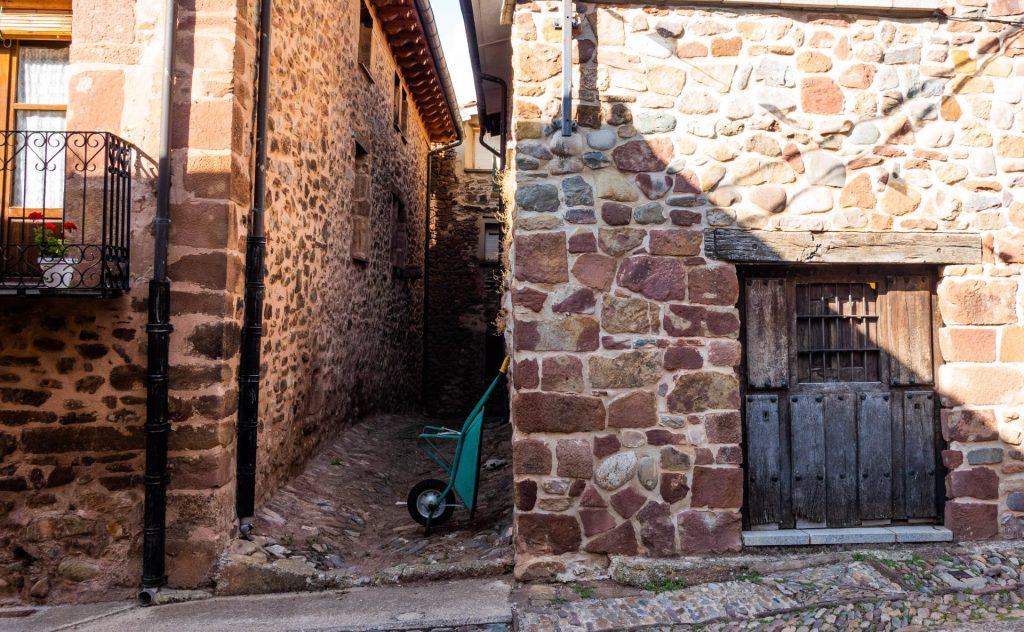
In Viniegra de Abajo the footprint of the indianos is evident with numerous palatial homesThese contrast with the simpler but similarly beautiful masonry constructions of the livestock farmers.
Its distribution along the river Urbión, a tributary of the Najerilla which has its source in a natural lagoon, makes the municipality a large space ideal for strolling through its cobbled streetsdotted with vegetable gardens and stone benches.
The discovery of tombs and a Visigothic stele point to the antiquity of the foundation of this villa known as Lutia in Roman times.
Livestock farming, especially sheep and cattle, is its main resource at present, supported by the exploitation of poplar and pine forests. In addition, its mountains are rich in mycological varieties.
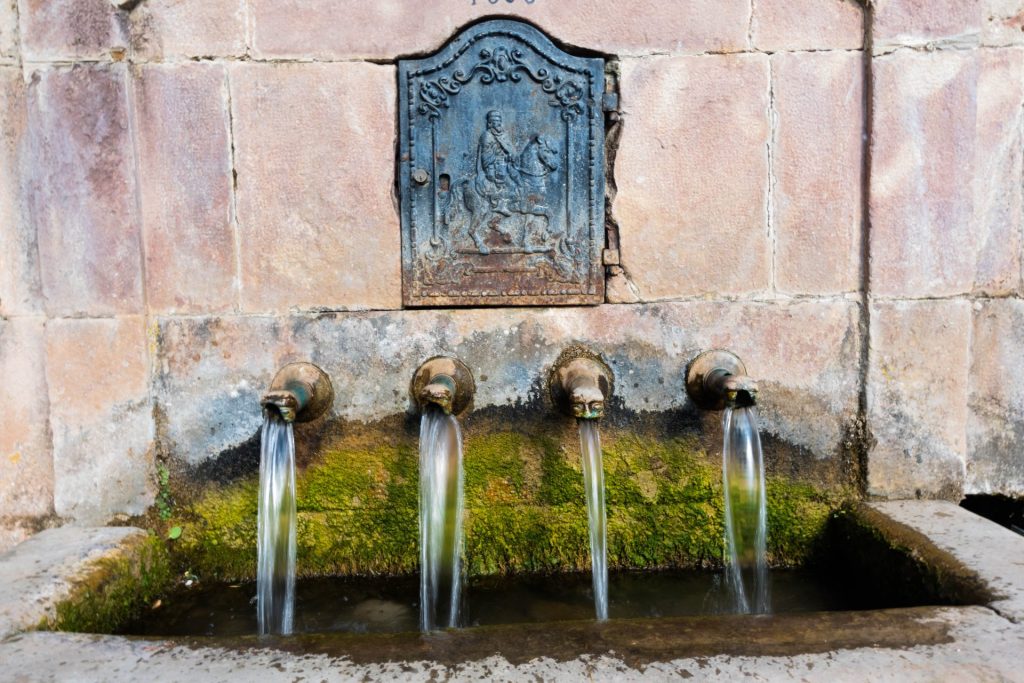
Of its artistic heritage the parish church of the Assumption is a highlight.The church is a solid building made of reddish stone. Also of interest are the hermitages of La Soledad, San Millán and Santiago. In the latter, the parchment of the constitution of the former Confederación de las Cinco Villas y Valle de Canales and the statutes of the current Colectivo de las 7 Villas-Alto Najerilla were signed.
The music festival will be held in 2019. "Sierra SonoraThe festival is a cycle of concerts and other artistic disciplines that takes place four times a year, once a season.
7. Viniegra de Arriba
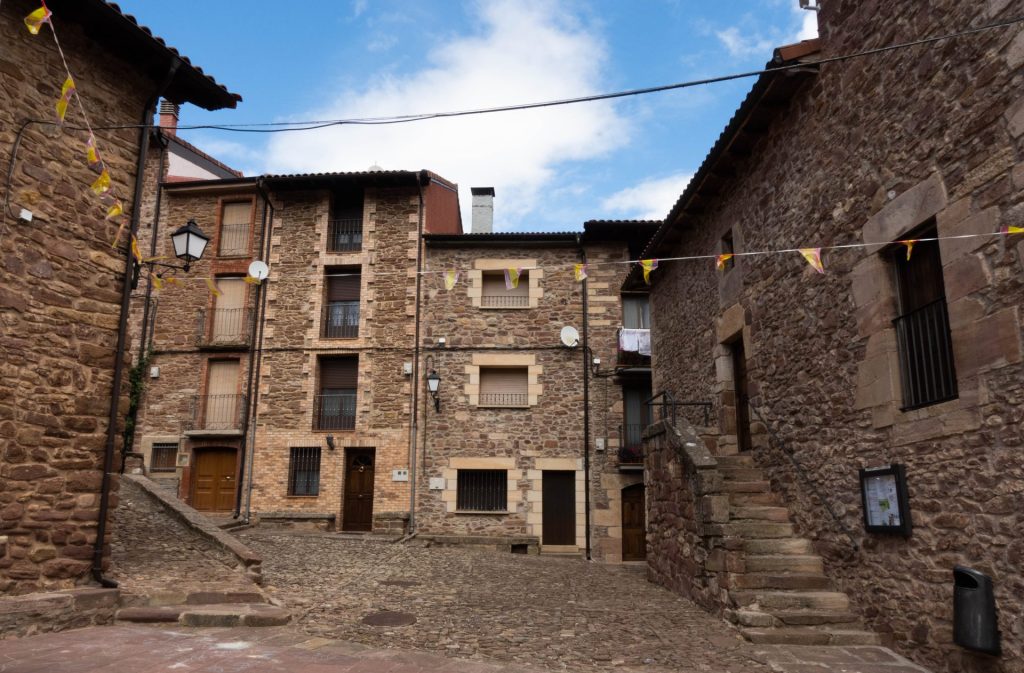
Watered by the Ormazal River, Viniegra de Arriba is one of the villages that has best preserved its popular architecture, its cobbled streets, and the charm of a small village, with its cows and sheep in the streets, keeping the charm it once had in the times of our ancestors.
Viniegra de Arriba is one of the last villages in La Rioja that keeps transhumant livestockThe Cañadas continue to cross the 7 Villas.
A few metres from the town centre, in the Collado de San Miguel, there is an Roman necropolis.
Its economy is based on the livestock farming.
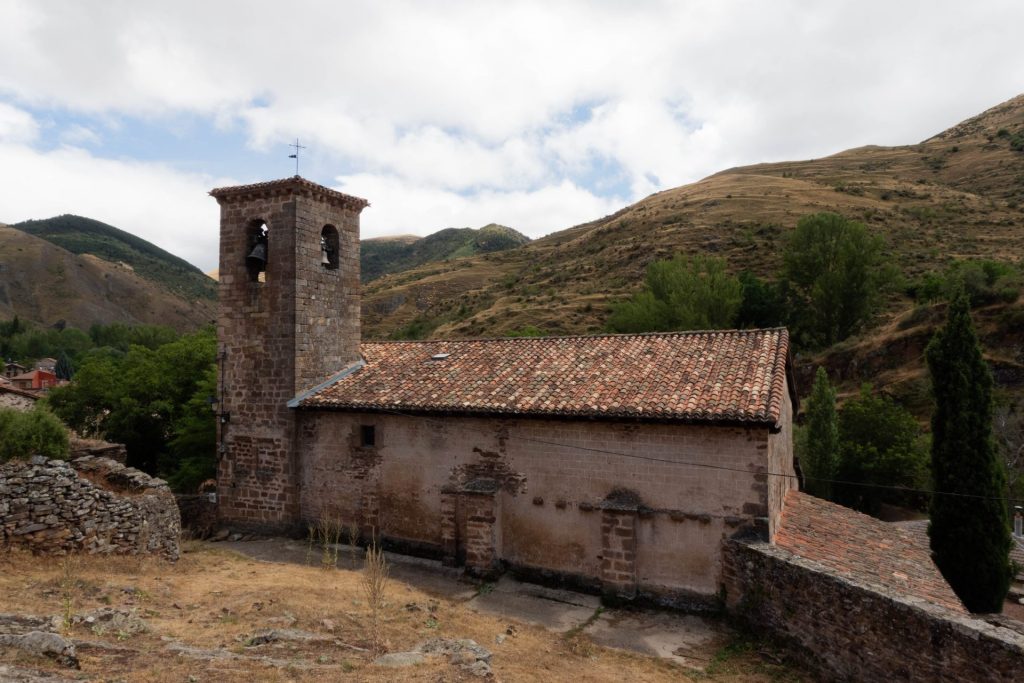
The the parish church of La Asunción, the hermitage of La Magdalena, San Vicente and the washing place. with its fountain of three spouts, concentrate the rich heritage of the municipality together with its stone buildings, some from the 17th century.
Strolling through this mountain village, the highest of the 7 Villas at 1,181 metres, it is a fantasy of unique cornerss that you won't be able to stop photographing.
7+1. Anguiano and the Monastery of Valvanera

As we have said, Anguiano is the gateway to the 7 Villas, and as well as being a picturesque village in the mountains of La Rioja, it is home to a treasure known to all the people of La Rioja: The Monastery of Valvanera, Patron Saint of La Rioja.
The Monastery of Valvanera is located in in the middle of nature at an altitude of 1000 metres above sea level.
The first Visigothic church was built in the 10th century with the arrival of the first hermits, it would be succeeded by the other pre-Romanesque consecrated in 1073. And behind it was built a Romanesque church. The is from the late Gothicfrom the end of the 14th century.
Throughout the 16th century, numerous reforms were carried out The building of an abbey chamber, the access stairs, the library, the refectory and new cells, among others, were built on the cloister building.
In the 17th century, the new porter's lodge, the new kitchens, and one of the most characteristic features of the monastery, the arcade gallery of the south façade.
Between 1835 and 1883, however, the monastery was abandoned as a consequence of the disentailment of Mendizábal.
From the Monastery of Valvanera a beautiful circular route of 4.5km affordable for everyone to enjoy the surrounding nature.
It is currently inhabited by the Monks of the Incarnate Word with daily masses and spiritual care.
Nature and Routes around the 7 Villas Riojanas
As could not be otherwise, the 7 villas, nestled in the mountains of La Rioja, are a region where nature shines in all its splendour. The ideal place for nature lovers.
There are numerous hiking routes, some of them very demanding, to discover the environment you can see at this linkas well as mountain bike and motorbike routes.
We hope you decide to visit this very special region of La Rioja, and as always, we recommend that you do so with the help of the hosts of La Rioja Premium.


